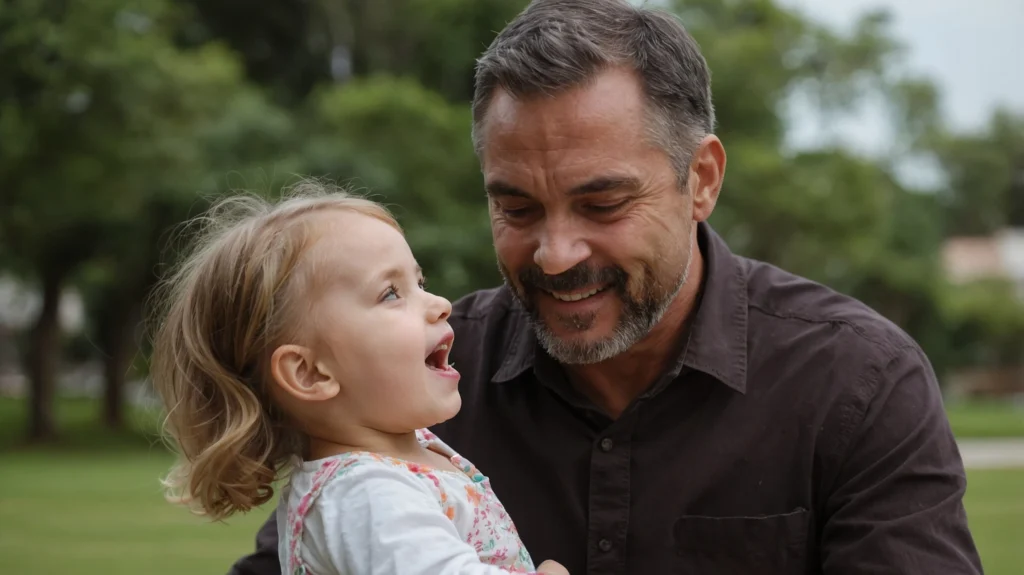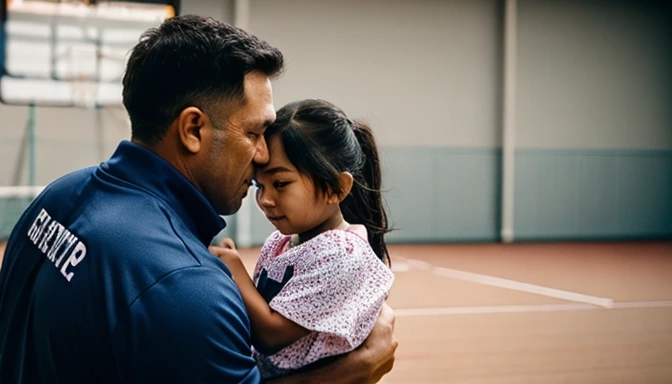Introduction
Educating our children about good touch and bad touch is an essential part of their development and safety. As parents, it is our responsibility to equip them with the knowledge and confidence to understand and assert their personal boundaries.
This blog aims to provide practical strategies and detailed guidance for parents of preschool baby girls, preschool baby boys, school-going girls, and school-going boys.
By addressing each age group’s unique needs, we can help our children navigate their interactions with others safely and respectfully.
Most of the things are similar for both preschool boys and girls when it comes to teaching them about good touch and bad touch.
Core Principles and Perspectives
Preschool Baby Girls

1. Body Parts Naming:
Teach the correct names for all body parts, including private parts, to avoid confusion and promote body autonomy. Using accurate terms helps children communicate clearly about their bodies and fosters a sense of ownership and respect.
2. Private Parts Privacy:
Explain that private parts are private and that no one should touch them except in specific situations, like a parent helping with bathing or a doctor during a check-up. Clarify that private parts are those covered by underwear and that they are special and should be protected.
3. Safe Touch Examples:
Use examples of good touches, such as hugs from family members and handshakes, to illustrate positive physical interactions. Explain bad touches as those that make them feel scared, uncomfortable, or confused. Emphasize that touches from people outside the family need to be treated with caution and that they have the right to refuse any touch.
4. Consent Basics:
Teach them to say “no” if someone touches them in a way that makes them feel uncomfortable. Reinforce that their bodies belong to them, and they have the right to set boundaries and refuse any touch they do not want.
5. Trust Your Feelings:
Encourage them to trust their feelings. If a touch feels wrong, they should tell a trusted adult immediately. Help them understand that their instincts are important and that they should always listen to how they feel.
6. Role-Playing:
Engage in role-playing scenarios to practice what to do if someone tries to touch them inappropriately. These exercises can help them feel more confident in asserting their boundaries and seeking help when needed.
7. Reinforce Boundaries:
Constantly reinforce personal boundaries and that it’s okay to say “no” to unwanted touches. Regularly remind them that setting boundaries is a sign of self-respect and strength.
8. Trusted Adults:
Identify trusted adults (parents, teachers, close relatives) they can talk to if they feel uncomfortable about a touch. Make sure they know who these people are and that they can always approach them with concerns or questions.
9. Storytelling:
Use stories and role-playing to explain good touch and bad touch scenarios. Stories can make these concepts more relatable and understandable for young children, helping them remember what they’ve learned.
10. Reassurance:
Assure them that it’s never their fault if someone touches them inappropriately. Reinforce that they should tell a trusted adult if something happens and that they won’t be in trouble for speaking up. Emphasize that their safety and well-being are the top priorities.
Preschool Baby Boys

1. Proper Terminology:
Teach the correct names for their body parts to remove any stigma or confusion. Using anatomical terms promotes a healthy understanding of their bodies and helps them communicate clearly and accurately about any concerns.
2. Understanding Privacy:
Explain that some parts of the body are private and should not be touched by others. Emphasize that these private parts are special and should be protected, ensuring they understand the importance of privacy.
3. Body Autonomy:
Encourage them to understand that their body belongs to them, and they can say “no” to unwanted touches. Teach them that they have control over their bodies and that it’s okay to refuse any touch that makes them uncomfortable.
4. Safe Zones:
Define private parts as those covered by underwear, and emphasize they should not be touched by others. This clear definition helps them understand which areas are off-limits and reinforces the concept of bodily autonomy.
5. Emotion Recognition:
Help them recognize and express their feelings about different touches. Teach them to understand their emotions and articulate when a touch feels wrong or makes them uncomfortable, fostering emotional awareness.
6. Positive and Negative Touches:
Provide clear examples of good touches (high-fives, pats on the back) and bad touches (unwanted pokes or pinches). This helps them differentiate between safe and unsafe interactions and understand what is acceptable.
7. Emergency Communication:
Teach them how to seek help from trusted adults if they experience a bad touch. Ensure they know who to approach and how to communicate their concerns effectively.
8. Positive Reinforcement:
Use positive reinforcement to encourage them to speak up about their feelings and experiences. Praise them for sharing their concerns and reassure them that it’s always good to talk about anything that bothers them.
9. Role-Playing:
Use role-playing scenarios to practice identifying good touch and bad touch in a safe environment. These activities can include simple scenarios to help them practice responses, such as yelling for help or finding a trusted adult when they experience a bad touch.
10. Open Communication:
Foster an environment where they feel comfortable discussing any touches that make them feel uneasy. Create a safe space for open dialogue, ensuring they know they can talk to you without fear of judgment or punishment.
11. Empowerment to Say No:
Encourage them to say “no” and walk away if someone tries to touch them inappropriately. Empower them with the confidence to assert their boundaries and seek help when necessary, reinforcing their right to protect their own bodies.
School-Going Girls

1. Detailed Education:
Provide more detailed information about their body parts and the concept of private parts as they grow older. This includes discussing anatomical changes they might experience and helping them understand their bodies better.
2. Boundaries:
Discuss the importance of personal boundaries and respecting others’ boundaries. Emphasize that everyone has the right to set limits on how they are touched and that these limits must be respected.
3. Safe Secrets vs. Unsafe Secrets:
Explain the difference between secrets that are okay to keep (like a surprise party) and secrets that should be told to a trusted adult (such as someone asking them to keep inappropriate touches secret).
4. Peer Influence:
Talk about peer pressure and the importance of trusting their instincts about touch. Help them understand that they should not feel compelled to go along with something that makes them uncomfortable just because their peers do.
5. Empowerment:
Empower them to assertively say “no” and remove themselves from uncomfortable situations. Teach them that it’s okay to prioritize their own comfort and safety over social niceties.
6. Safe Online Behavior:
Educate them about safe behavior online and the importance of not sharing personal information. Discuss the risks associated with online interactions and how to protect themselves in the digital space.
7. Support Network:
Ensure they know they have a support network of trusted adults they can turn to. Make sure they can identify these people and feel comfortable reaching out to them when needed.
8. Recognizing Unsafe Situations:
Teach them to recognize situations that might lead to inappropriate touching and how to avoid them. This includes understanding warning signs and knowing when to leave or seek help.
9. Difference Between Safe and Unsafe Touch:
Emphasize the difference between safe touches (such as a comforting hug from a friend) and unsafe touches (such as an unwanted hug from a stranger). Use specific examples to clarify these distinctions.
10. Assertiveness Training:
Encourage assertiveness in expressing discomfort and saying “no” firmly to unwanted touches. Practice scenarios where they can role-play saying no and seeking help.
11. Safe Adults and Safe Places:
Discuss who the safe adults are and where safe places are if they ever feel threatened or uncomfortable. Ensure they know where to go and who to talk to in case of an emergency.
12. Reporting Mechanisms:
Ensure they understand the importance of reporting any bad touches to a trusted adult immediately. Emphasize that they will not be in trouble for speaking up and that their safety is the priority.
13. Building Confidence:
Build their confidence in discussing their feelings and experiences related to touch, ensuring they feel heard and supported. Regularly check in with them to provide opportunities for open communication.
14. Reinforcement:
Regularly reinforce the lessons through discussions, stories, and educational videos. Consistent reinforcement helps these important concepts stay fresh in their minds and encourages them to apply what they’ve learned.
School-Going Boys

1. Respect and Consent:
Teach them the importance of respecting others’ boundaries and the concept of consent. Emphasize that everyone has the right to control how they are touched and that respecting these boundaries is crucial in all relationships.
2. Clear Communication:
Encourage clear communication about what feels comfortable and what doesn’t. Teach them to express their feelings and boundaries clearly and confidently to ensure mutual understanding and respect.
3. Recognizing Abuse:
Help them recognize signs of abuse and understand that abuse is never their fault. Explain different forms of abuse and stress that seeking help is always the right action.
4. Action Steps:
Provide clear steps on what to do and who to contact if they experience bad touch. Equip them with practical strategies, such as identifying safe places and people they can approach for help.
5. Peer Dynamics:
Discuss how to handle situations where peers might pressure them into uncomfortable scenarios. Teach them to assert their boundaries and seek support from trusted adults if they feel pressured.
6. Safe and Unsafe Touch:
Reinforce the difference between safe and unsafe touch with examples. Explain safe touches (like team sports pats) versus unsafe touches (touches that feel uncomfortable or secretive) to help them recognize and differentiate between the two.
7. Healthy Relationships:
Teach them about the characteristics of healthy relationships and mutual respect. Highlight the importance of trust, communication, and respect in all interactions.
8. Comprehensive Understanding:
Provide a thorough understanding of their own bodies and the concept of private parts. Educate them about anatomical changes and reinforce the idea of body autonomy and privacy.
9. Trusting Instincts:
Teach them to trust their instincts and recognize when a touch feels wrong or makes them uncomfortable. Encourage them to listen to their feelings and act on them by seeking help if needed.
10. Saying No Strongly:
Empower them to say “no” strongly and to remove themselves from uncomfortable situations. Practice assertive communication and reinforce that it’s okay to prioritize their own comfort and safety.
11. Identifying Trusted Adults:
Help them identify trusted adults in their lives whom they can approach if they experience a bad touch. Ensure they know these individuals and feel comfortable seeking their support.
12. Role-Playing Exercises:
Engage in role-playing exercises to practice responses to unsafe touches and situations. These scenarios can help them build confidence in handling real-life situations effectively.
13. Creating Safe Spaces:
Create an environment at home where they feel safe to talk about their experiences and ask questions about touch. Foster open communication and ensure they know they can discuss any concerns without fear of judgment or punishment.
E. General Tips for All Parents

– Consistent reinforcement of lessons.
– Creating a safe environment for discussions.
– Monitoring and guiding online activity.
Conclusion
Teaching children about good touch and bad touch is a continuous process that requires patience, open communication, and reinforcement.
By starting these conversations early and providing age-appropriate guidance, we empower our children to protect themselves and respect others. Remember, creating a safe environment for discussion and being a trusted source of support is crucial.
Together, we can help our children grow into confident, informed, and respectful individuals who understand the importance of personal boundaries and consent.
Why This Product Deserves Your Attention
As always, at the end of every blog on sobersextext.com, we recommend products that perfectly align with the theme of empowering individuals through knowledge and education. For this blog, focused on educating children about body boundaries, good touch, and bad touch, we’ve selected two exceptional books that can be vital tools in building a secure foundation of trust and awareness for your kids. First, Let’s Talk About Body Boundaries, Consent, and Respect by Jayneen Sanders offers practical, age-appropriate insights into body autonomy, helping children understand personal space and boundaries. Second, Your Body Belongs to You by Cornelia Spelman is a beautifully written book that helps children understand the concept of personal rights and respect, providing them with the tools to confidently communicate their boundaries. These books are designed to empower children with the knowledge they need to stay safe and make informed decisions, fostering a healthy understanding of body autonomy from an early age.
If you’re curious about why these products deserve your attention, you’ll find a comprehensive review on our partner site, awareandbeware.com. The review explores every detail of the products, including their features, benefits, and any potential drawbacks, helping you make an informed decision. I encourage you to read the full-length review for a deeper understanding of how these books can be a vital addition to your child’s education.



